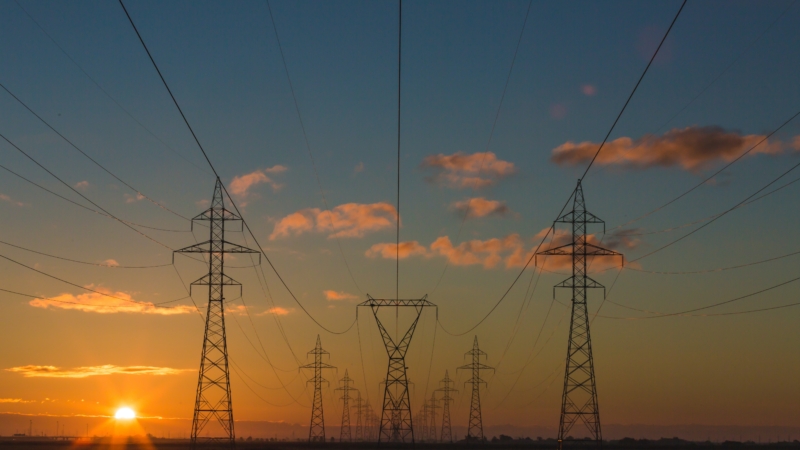SPN’s Energy Czar Discusses the Truth About the Left’s Climate Change Agenda
The parent organization of The Ocean State Current, the RI Center for Freedom & Prosperity is a member of the State Policy Network, a national association of over 60 state-based “free market” think tanks.
State Policy Network recently welcomed Amy O. Cooke as its Visiting Energy Policy Fellow. In this role, she will oversee the Energy Policy Working Group—a coalition of state-based organizations working to improve energy policy across the country. Amy comes to SPN from the John Locke Foundation—a nonprofit think tank based in North Carolina. At the Foundation, Amy was the Chief Executive Officer and publisher of The Carolina Journal.
We’ve nicknamed Amy Cooke as SPN’s “Energy Czar”. Below, are some of Amy’s comments about the left’s climate change agenda.
****
“The Green New Deal was just conceptual before, but it’s a reality now. You’re seeing it everywhere—whether it’s mandates on electric vehicles or offshore wind or additional EPA regulations coming down and putting their thumb on businesses in states.
Much of the drive to the “transition” to green energy is ideologically based. It’s based on climate change. But here’s the thing. Those pushing for a transition to green energy use the word climate change, but it’s not really about climate change. It’s about power. And when I say that I mean political power. If they truly cared about the climate, they’d be saying “let’s get to clean energy.” Meaning nuclear, hydro, anything with less emissions. But they don’t. Some policy leaders are all in on wind and solar, which are intermittent. You can’t just call on them and have power when you want it. You can’t just flip a switch. If you’re reliant on wind and solar, you can’t just flip a switch and your power goes on—because it’s not a reliable power source.
Wind and solar are expensive, intermittent, and you have to over-build to get any sort of marginal power out of them. When people say “renewable energy,” what they mean by that is wind and solar. We use the term “clean” because clean incorporates nuclear—you don’t have to prematurely retire assets. You use carbon sequestration. It can mean any source of clean energy, and that means you can use coal and natural gas with certain technologies that will make them clean. To me, groups that are pushing a transition to green energy use climate change as a club, but they don’t really care about it—if they did, they would be all in on nuclear and any technology that gets you to clean. And they’re not. They want wind and solar.
Low income Americans will suffer the most. Colorado is about to release a paper that shows that if the transition to 100 percent wind and solar with batteries will cost the average ratepayer about $450 a month more. That’s $5,000 more per year for a product that is inferior. Low-income communities will have their power shut off first. They can’t afford it now. What they call a transition—and what I call a forced march—massively increases the cost of power. And the people who can least afford that are the ones who will be most impacted.
In so many other areas, as you get better at producing, things become less expensive. Think about how cheap it is to get a flat TV screen today. Power, which we’ve been doing so well and so long, it has double, tripled in cost—well above the rate of inflation. As we’ve produced more of it, we’re better at it, but it’s gotten more expensive because we have politicized electricity. If we allow the politicization of electricity, the next thing will be food. We have to fix this. Or we will be sitting and thinking about the good old days when I can flip a switch and a light would go on.
Wind and solar developers will benefit most. They make a ton of money. The other thing is utilities. The return on investment for a utility or generator is high if you are building wind and solar. And part of that is how the utility world is set up, but it’s also because of taxpayer funded tax incentives. So, production tax credits. They can give away power, literally give it away, pump it out on the grid. And not receive any payment for it, but they get money from the federal government through tax incentives. So, when they tell you wind and solar is cheaper, it’s not true. It’s simply a cost shift. It shifts who pays for it. For example, somebody from North Carolina will pay for states that have a bunch of wind and solar development because it’s going through your federal tax dollars. It’s a perverse system.
We’re seeing a lot of negative policy trends in various statehouses. You hear this all the time, states that are not in something called an RTO—a Regional Transmission Organization. Lawmakers who are pushing a transition to green energy will tell you all the time “we need to be in a market.” You hear about these markets, these wholesale markets for electricity. There is no market for electricity. Those are just places for wind and solar developers to dump their electricity so they can get production tax credits.
We’re also seeing electric vehicle mandates and green building codes that require the electrification and banning of gas. Some municipalities, states, and even the EPA are trying to eliminate the use of natural gas in cooking. So, all of that adds to the grid, a grid that already can’t handle the load that it has. We’re putting more demand on our electric grid while we’re making it less stable.
The left’s push to ban gas stoves is all part of a phase out of all fossil fuels. In 2010 I wrote a piece on a Colorado fuel switching bill, and I said we are one legislative fix away from ridding the state of all fossil fuels. I noted then that people’s electric bills will go up. Fast forward to 2023, electric rates have skyrocketed in Colorado and some lawmakers want to completely phase out the use of fossil fuels for any kind of power or transportation generation. Think about that. No fossil fuels. How do you heat your water heater? Most people have natural gas. In new homes you won’t be able to do that. So how would you do that, you just plug it in. But how is the grid powered? With wind and solar.
The problem with transitioning to 100 percent green energy is that it will never work. You can’t build a battery big enough. There isn’t enough land in the United States to build enough wind and solar, plus batteries to power the country. There is not even a single state that is powered by wind, solar, and batteries. If you are making power more expensive, and less reliable, and you are doing it intentionally, you are taking away people’s ability to thrive and prosper, run a business, and provide for their families.
As an example of good public policy, North Carolina recently passed bipartisan legislation called Energy Solutions for North Carolina. There are no dictates on resources, they just have guardrails that factor in cost, reliability, and flexibility on timeline and technology. So what does that mean? It means nuclear energy. It means you don’t have to retire coal and natural gas early. You can use carbon sequestration, new technologies to capture carbon so that it is a zero carbon-emitting source. There are things that we can do that don’t dictate just wind and solar. Why would we limit our choice to two resources? We have so many other ways to generate power. Plus, we don’t even know what people will come up with in 20 years.
What can SPN and its affiliates do? First, we need to change the narrative. Energy is about tradeoffs but it’s not this either or. In other words, it’s not “do you want clean air, or do you want power?” The truth is, we can develop our natural resources responsibly. We can produce an abundant amount of power. We can allow our economy to thrive. And we can do it and still be good stewards of our environment.
Second, we need to forge a new path. It’s stopping the forced march. It’s producing electricity cleanly and reliably with dictating resources. Getting behind nuclear energy. Nuclear is going to be the energy of the future. Finally, there’s a big opportunity regarding regulatory reform and the rulemaking process.
In many states, SPN organizations are the driving force or one of the biggest influencers over public policy. They are in a good position because they are trusted. State think tanks can offer alternatives that focus on the American entrepreneurial spirit of developing abundant and reliable energy. SPN think tanks, just for the sheer fact of who we are, we’re in the statehouse, courthouse, newsrooms, classrooms—we can tell the story of the importance of energy abundance and affordability. And change not just public policy, but the culture as well. You’ll find there is a younger generation hungry for solutions on how to power their grid, their world, in a clean way but also a reliable way.
We can offer up those alternatives—like nuclear energy, like small-scale modular reactors—and be the supporters of new technologies to appeal to a younger generation. Some state think tanks have relationships with these groups of younger people who are environmentally aware but also realize we must power our grid in a reliable way. There’s a void of any leading voice bringing these groups together—SPN is perfectly poised to be the leader and driver of that coalition.”
Support local and honest journalism by becoming a charter member of the Ocean State Current.
As our liberties are under constant attack – and the dishonest corporate media fails to hold public officials accountable – The Ocean State Current has become the choice of parents and citizens who value honest and fearless reporting. Why? Because we provide in depth discussion of stories that other news organizations refuse to even cover.
For just $3.99 per month, or only $39.99 for a pre-paid full year, as Cruise Member you will support journalism you can trust… on issues that are important to you and your family.



